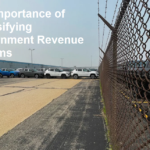On Friday, March 21st, 2025, Johor, Malaysia, faced yet another devastating flood, forcing the evacuation of over 10,700 citizens. This event, reported widely in news outlets, serves as a stark reminder of the increasing vulnerability of the region and the pressing need for comprehensive and effective disaster management strategies. The floods highlight a complex interplay of factors, ranging from meteorological conditions and environmental degradation to socioeconomic vulnerabilities and infrastructural inadequacies.
The frequency and intensity of flooding in Southeast Asia, and specifically Malaysia, have been demonstrably increasing in recent years. Climate change, with its associated consequences of rising sea levels, more intense rainfall, and altered weather patterns, is undoubtedly a key driver. While attributing a single event solely to climate change is often problematic, the broader trend of exacerbated flood risks aligns directly with predictive models. The increased intensity of rainfall, saturating already vulnerable land, overwhelmed existing drainage systems, leading to the rapid inundation of residential areas and critical infrastructure.
Beyond the immediate meteorological triggers, environmental factors play a significant role in exacerbating the impact of floods. Deforestation, particularly in upstream areas, reduces the natural water retention capacity of the landscape. The loss of vegetation cover allows rainwater to flow rapidly downstream, increasing the volume and speed of runoff. Similarly, uncontrolled urbanization and development, characterized by the paving of land and the construction of impervious surfaces, contribute to reduced infiltration and increased surface runoff. The alteration of natural waterways through riverine development and encroachment further disrupts natural drainage patterns, increasing the risk of flooding in vulnerable areas.
The socioeconomic consequences of the Johor floods are significant and far-reaching. The displacement of over 10,700 individuals represents a substantial disruption to their lives, livelihoods, and social networks. Evacuation centers, while providing temporary shelter and basic necessities, are often overcrowded and lack adequate sanitation, raising concerns about public health and the spread of disease. The economic impact extends beyond immediate damages to homes and infrastructure. Disrupted business activities, agricultural losses, and the cost of emergency response and recovery efforts contribute to a significant financial burden on the region and the nation as a whole.
Furthermore, the distribution of vulnerability is not uniform. Low-income communities, often residing in flood-prone areas with inadequate housing and limited access to resources, are disproportionately affected. These communities often lack the financial means to adequately prepare for, or recover from, such disasters. The floods can exacerbate existing inequalities, pushing vulnerable populations further into poverty and hindering their long-term development prospects.
Addressing the challenge of flooding in Johor requires a multi-pronged approach that encompasses both mitigation and adaptation strategies. On the mitigation front, concerted efforts are needed to address climate change through reducing greenhouse gas emissions. Locally, this translates to enforcing stricter environmental regulations to curb deforestation, promote sustainable land use practices, and invest in green infrastructure that enhances natural water retention.
Adaptation strategies are equally crucial. Investing in improved drainage infrastructure, including larger culverts, retention basins, and flood walls, is essential to manage increased runoff. Early warning systems, utilizing real-time monitoring and predictive modeling, can provide crucial lead time for evacuation and other preparedness measures. Furthermore, community-based disaster preparedness programs can empower residents to take proactive steps to protect themselves and their property. This includes educating communities about flood risks, developing evacuation plans, and providing access to essential emergency supplies.
In conclusion, the Johor floods of March 2025 underscore the urgent need for comprehensive and integrated flood management strategies. Addressing the complex interplay of climate change, environmental degradation, and socioeconomic vulnerability is paramount to building resilience and protecting the well-being of the communities at risk. By prioritizing sustainable development, investing in adaptive infrastructure, and empowering local communities, Malaysia can mitigate the devastating impacts of future floods and build a more resilient future for all.












